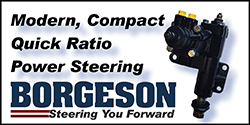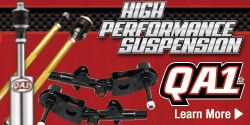Mattax
Just the facts, ma'am
Lok at post #8, and there's more in that thread further down.Or better yet, take a look at some of the timing tables for late 360s with more efficient heads.
With more efficiency and more load (truck), less timing should be needed.
Only difference with carbs is the need for reducing HC and CO at idle is less a concern. No need to run 14 AFR idle mixes. So again less timing will be needed.

Need some help with my timing curve.
So after running an eBay Ready-to-Run Hei distributor for the past 5-6 years, I finally got around to putting a timing light on it and mapping out the advance curve. Come to find out, the curve was severely lacking! I ended up swapping out that distributor with a factory electronic distributor...
 www.forabodiesonly.com
www.forabodiesonly.com
looking at the table
690 - 780 torr is atmospheric, so nearly to fully wide open throttle The timing in those columns is equal to the mechanical advance.
111 torr is very high vacuum, so idle and decel.
296 torr is part throttle with moderate load.
My take away is that engine could run a lean idle with as much as 17* initial, and rich idle as low as 10*. With a distributor, if you can split the difference, it should be OK. You'll have to keep iterating timing, throttle position, and fine mix screws until its where you are satisfied.
it also looks like it should be good with about 12 degrees of vac advance. You'll have to do the conversions from torr to relative vacuum to see when vac advance should go away (and enrichment begins) under load.
Read everything @TT5.9mag posted in there.

















